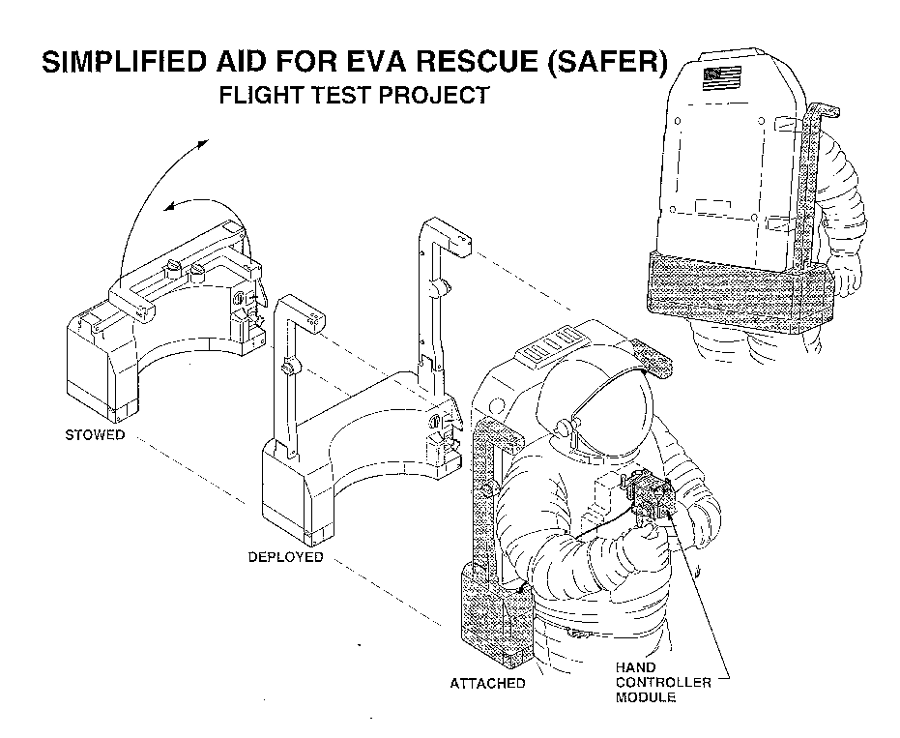It is not an easy job to be an astronaut. We are all used to live on a planet where there are limitless oxygen and at least some gravity – besides other important things. There are also a lot of risks out in space, and everyone willing to go there needs preparation. That’s why NASA’s astronauts need two years of hard physical and mental training using many advanced resources, like virtual technology and gravity-less training.
Astronauts’ activities, workouts, and assignments change every single day. The National Aeronautics and Space Administration has them handling stressful and random situations to surprise them. For example, the agency uses a giant pool known as the Neutral Buoyancy Lab to train astronauts to spacewalk. They also perform rover simulations for traveling over strange surfaces.

Virtual simulation can prepare astronauts for events such as their vehicles running out of gas, or freely floating and spinning in space.
NASA has been using virtual reality for decades. But it has grown thanks to the help of other tech companies, like Epic Games’ Unreal Engine, Oculus, and even PlayStation.
For advance-planning in the space, NASA trains astronauts in the Earth using more than virtual reality
NASA located its virtual reality laboratory, the Johnson Space Center, in Houston, where astronauts plan their future expeditions in space and inside the International Space Station.
Diving in water is the closest way to re-create the feeling of floating in a zero-g zone. A replica of the International Space Station exists inside of an immense pool called the Neutral Buoyancy Lab, located at the Sonny Carter Training Facility in Houston, Texas. In there, astronauts can learn how to walk like if they were in zero gravity.
However, the NBL is not the only way to train astronauts to spacewalk. The agency also uses virtual technology to imitate the same conditions as if they were outside, but very close to the ISS. This way, they can mimic the process of scaling the ISS modules.

We would feel sick if we changed our living conditions in such an extreme way: How we walk, eat, and sleep. That’s why astronauts’ training takes many months, sometimes even years. In the Virtual Reality Lab, they can simulate specific missions astronauts perform in space.
“Simulated environments have always been important in astronaut training,” said Jason Crusan, Director of NASA’s Advanced Exploration Systems Division. “Beyond practical uses for training, virtual reality offers us a compelling method to share the work we’ve been doing to design sustainable human missions and to inspire the next generation of pioneers in space.”
The Johnson Space Center is also the Systems Engineering Simulator, a facility with mockups of space trucks that astronauts may be tasked to operate on an unusual surface – like the moon, or a solid-planet. Thus, astronauts receive training on how to work in the space capsules that SpaceX and Boeing are constructing, which will be carrying them to the space station in the next couple of years.
NASA also prepares astronauts for critical situations
The agency doesn’t train astronauts just for advance-planning while they’re out in space. They do so to prevent critical moments, like if they were disconnected from the ISS during a spacewalk, and suddenly they started to float through space. Fortunately, that kind of scenario has never happened accidentally in the history of space journeys. But NASA takes into account any remote probability of a catastrophe.

The virtual reality simulates the horrible moment when the hand releases the handrails, the cable disconnects from the ISS, and the entire International Space Station gets further from where the astronaut is. However, to get back, astronauts can operate a jet backpack called SAFER, which uses tiny thrusters to propel them through space. In reality, it is not the easiest tool to maneuver. But in the virtual simulation, they can test the difficulty of using SAFER in an emergency scenario.
“You can see how you part affects the greater project – how it will fit in, how it may interact or cause other problems,” said Jeffrey Brandt, a solutions architect for NASA Langley’s Office of the Chief Information Officer.
Source: The Verge
